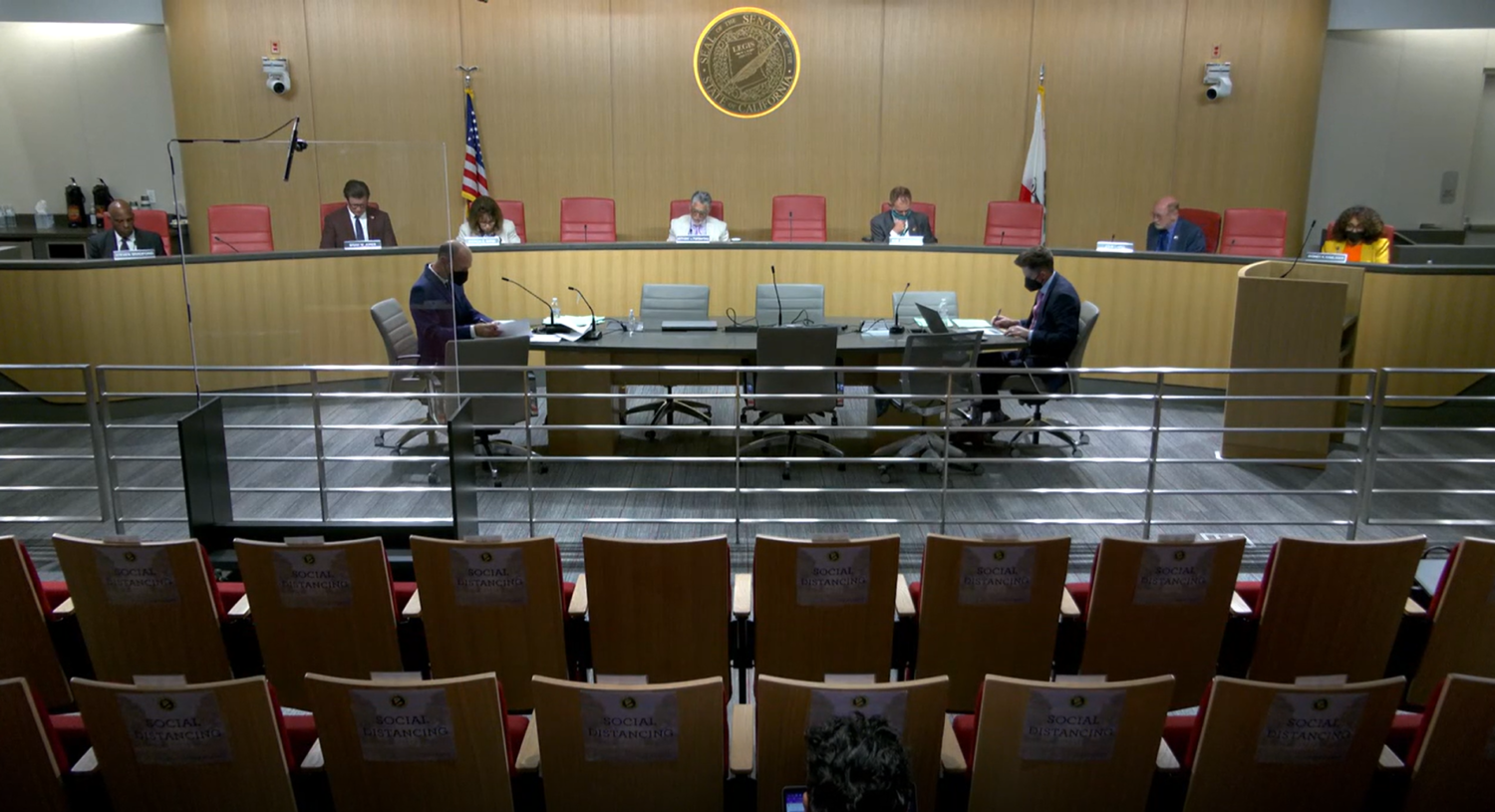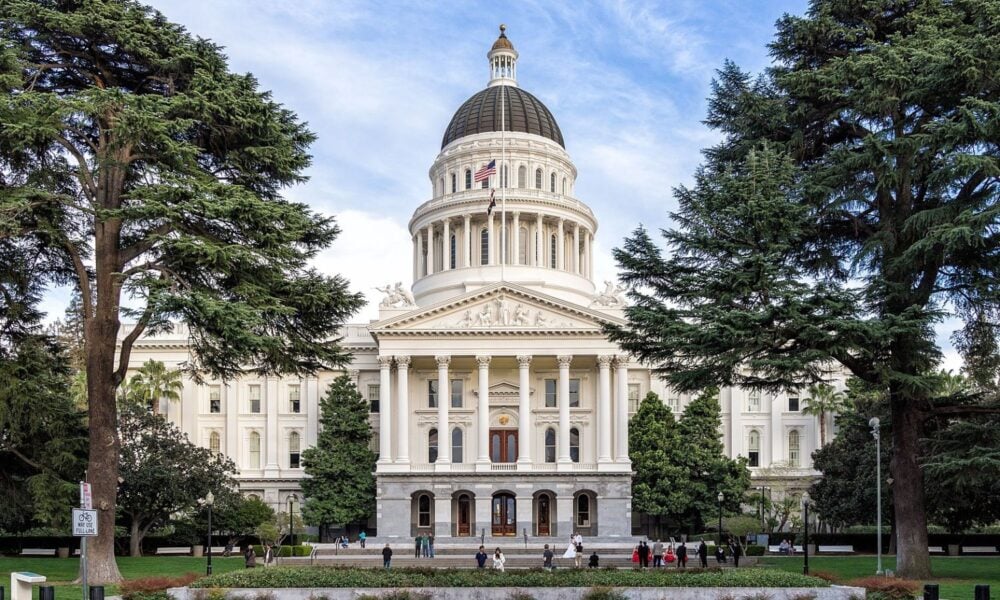Earlier this year, the Union of Concerned Scientists (UCS) sponsored a bill in the California Legislature, Senate Bill (SB) 881, which was introduced by state Sen. Dave Min. It was a modest piece of legislation, but if it had passed, it would have helped ensure California achieves its ambitious clean electricity goals.
Unfortunately, the bill vanished without coming to a vote in a legislative committee.
Now, it’s not surprising for a clean energy bill to fail. But in this case, it is surprising how this particular bill met its demise.
The story of SB 881 provides a small glimpse into the messy reality of California energy politics. I’m going to walk through what the bill would have done, why the bill ultimately failed, and I’ll leave you with a preview of what’s coming up next to ensure California follows through on its clean electricity commitments.
What would SB 881 do?
At its core, SB 881’s goal was to ensure that California’s electricity sector achieves its decarbonization goals.
California has a Renewables Portfolio Standard (RPS) that requires 60 percent of its electricity to come from renewable resources such as wind and solar in 2030, but it has become clear that the state needs to go above and beyond those requirements. In California’s integrated resource planning (IRP) process, state regulators have set a goal to reduce electricity sector global warming emissions from approximately 60 million metric tons (MMT) today down to 38 MMT in 2030. That 2030 emissions target is roughly equivalent to a 70-percent RPS requirement, far above the statute’s 60-percent requirement.
The problem is that there aren’t any legal mechanisms currently in place to ensure California’s electricity sector goes above and beyond the 60-percent RPS requirement and achieves its 2030 climate change goals. That’s where SB 881 comes in.
SB 881 would have made it clearer that the California Public Utilities Commission (CPUC) has the authority to establish and enforce global warming emissions reduction requirements for the electricity sector. The bill intended to move the IRP process beyond planning and would have required electricity providers to follow through with their clean energy commitments, helping to ensure that California meets its climate change goals.
Who opposed the bill?
Although there was broad support for SB 881 in the clean energy community, it turned out that not everyone had such a rosy view of the bill. The main opposition came from community choice aggregators (CCAs), which are, for the most part, stalwart champions of clean energy. Their statewide advocacy association, CalCCA, agreed that systems should be in place to ensure that California’s electricity sector reduces its emissions in line with the state’s climate goals, but they were concerned about potential negative outcomes if the implementation details were left to the CPUC’s discretion.
A couple of investor-owned utilities, especially Southern California Edison, also opposed the bill. Interestingly, even though investor-owned utilities and community choice aggregators are almost always butting heads, they finally found something to agree on: This bill needed to change, or it needed to be stopped.
To be fair, CalCCA and Southern California Edison negotiated in good faith and ended up offering reasonable amendments to the bill. The main changes they wanted were: 1) more specific details pertaining to the emissions reduction targets, and 2) provisions to ensure that electricity providers wouldn’t be penalized for failing to meet their targets if they did everything within their power to comply.
Overall, many of their suggestions were sensible and UCS supported at least some of them. I think we could have come to an agreement but, of course, there was a final twist.
Why did SB 881 ultimately fail?
The essential point of the bill was to clarify the CPUC’s authority to establish and enforce electricity sector emissions reduction targets. The CPUC welcomed this type of clarity, but it also had a red line it didn’t want this bill to cross: The CPUC would oppose any language that restricted its authority in any way.
CalCCA and Southern California Edison wanted amendments to the bill that effectively would have restricted the CPUC’s authority, and the CPUC wouldn’t give any ground. There wasn’t any room for compromise, so it ended in a stalemate.
That spelled doom for SB 881.

SB 881 met its demise when the California Senate Appropriations Committee did not even take a vote on the bill during its hearing on May 19. (Photo: California State Senate Appropriations Committee)
What can we learn from SB 881’s demise?
The first lesson that’s quite clear from this story is that California’s electricity providers are nervous that, no matter how hard they try, they may not be able to meet their clean energy goals. The solar tariff case had cast a chill over the solar market (though the Biden administration recently announced a plan to clear the logjam) and supply chain issues along with COVID-19 lockdowns have led to delays and price increases for solar and storage projects (e.g. Ameresco recently delayed a massive battery storage project for Southern California Edison). Because of all of this, electricity providers are having a tough time getting their clean energy projects finished on time and on budget. Electricity providers are apparently concerned that these turbulent market conditions will persist, and they don’t want to get slapped with penalties if they fail to meet their goals because, for instance, their imported solar panels got stuck in a port somewhere.
The second lesson is that, because SB 881 did not pass, the CPUC’s authority is still a little fuzzy. UCS has been operating under the assumption that the CPUC already has the statutory authority to establish and enforce global warming emissions reduction requirements, and that is certainly the position that the CPUC has taken so far. But after discussing the CPUC’s authority with other industry experts, I’ve heard a range of views. This legal uncertainty is one of the main reasons why UCS sponsored SB 881. We didn’t want statutory ambiguity to hinder the state’s clean energy progress.
California should have airtight laws in place that ensure the electricity sector achieves its decarbonization goals. UCS feels strongly about this, as do I.
Can the state still meet its clean electricity goals?
Despite all of this, I’m happy to report that the CPUC is planning to go right ahead and develop “programmatic procurement requirements” as part of its IRP process. One of the many elements of these requirements will be to ensure that California’s electricity providers follow through on their clean energy commitments and reduce their emissions in line with state goals. The CPUC is planning to implement a program next year, and compliance would begin in 2024, so the agency is not wasting any time.
But there’s a lot of work to do between now and then. There are tons of details that will need to be worked out, and with the achievement of California’s decarbonization goals hanging in the balance, the stakes are high. California cannot miss the mark and fail to reach its goals. The country, if not the world, is watching California closely and following its lead. The state can’t afford to fail.
UCS will be hard at work advocating for stringent requirements that will ensure California meets its climate goals. And despite the cautionary tale of SB 881, I’m optimistic that the CPUC will be able to develop programmatic procurement requirements that are widely accepted by palatable to electricity providers. (My optimism has its bounds!)

